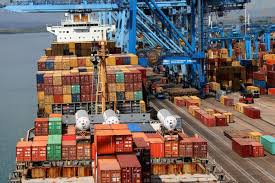Kenya recorded its lowest trade deficit in four years in the first quarter of 2025, helped by rising exports and falling fuel costs. The trade gap between imports and exports fell to Sh372.12 billion (about USD 2.8 billion), according to statistics released recently. This shift has grabbed attention in the finance and economy circles in Africa.
Merchants and analysts say that lower global oil prices played a major role. Fuel imports dropped sharply, easing pressure on the import side. This comes after Kenya recorded yearly fuel import bills that used to push the country further into deficit territory. With the current reduction, the economy is getting some breathing room while it continues to import machinery, consumer goods, and vehicles.
Export growth has been led by agriculture, especially tea, coffee, and horticulture products. Kenya remains a leading exporter of black tea and cut flowers, with demand rising in Europe and the Middle East. Nairobi’s Mombasa Channel reported that tea exports rose by around 12 percent, while floriculture shipments grew by about 8 percent compared to last year. These gains helped narrow the trade gap, though exact export figures were not yet released.
The manufacturing sector also made small contributions. Local industries are now producing more processed foods, textiles, and packaged goods. This slowly reduces dependence on imported finished products—an important development in the country’s bid to boost local production.
While the trade deficit has shrunk, it still shows Kenya imports more than it exports. Analysts caution that fresh risks lie ahead. Changes in world fuel prices, global crop yields, and foreign demand could shift the balance again. Kenya’s reliance on imports of wheat, rice, sugar, petroleum, and machinery still strains the economy.
Dr Patricia Wanjiru, an economist at the University of Nairobi, said this current improvement is good news. “We are seeing the impact of lower oil bills and growing traditional exports. But we must diversify exports further and strengthen local industrial output to sustain this progress,” she said.
The East African Community (EAC) customs union and the ongoing African Continental Free Trade Area (AfCFTA) are also helping. They make it easier for Kenyan goods to move into neighbouring markets like Uganda, Tanzania, Rwanda, and the Democratic Republic of Congo. Trade sources mention these regional trade hubs have helped increase export volumes without heavy duties.
Central Bank of Kenya data shows that in Q1 2025, goods imports fell by about 5 percent, while exports grew 7 percent compared to the same period in 2024. This trend continues a longer pattern where the country seeks to trim its trade gap, which stood at over Sh500 billion in certain quarters of 2023 and 2024.
Finance Minister Njuguna Ndung’u welcomed the news. He said the government would support export sectors with incentives, easier access to credit, and tax breaks. He also mentioned plans to boost the “Buy Kenya, Build Kenya” initiative, which encourages local sourcing by public and private buyers to support agro-processing and manufacturing firms.
Some private sector leaders also applauded the narrowing deficit. Isaac Ouma, president of the Kenya Manufacturers Association, said this shows that local producers are gaining some ground. “We are now processing more local resources and exporting more finished products, not just raw materials. That is a step in the right direction,” he said.
However, some members of Parliament called for cautious optimism. MP Adoyo Okello from Busia county noted that global supply shocks, like droughts or war, could impact exports and fuel prices. “We must build resilience in agriculture and invest in renewable energy to cut oil dependency,” he added.
Looking ahead, Kenya plans to improve its trade balance by further expanding manufactured exports and moving into higher-value goods, such as processed foods, pharmaceuticals, and leather products. Officials are preparing new trade deals and pushing AfCFTA implementation to open wider markets for Kenyan goods.
Financial analysts watching the Nairobi Securities Exchange (NSE) think this trend may also influence the Kenyan shilling. A smaller trade deficit could ease pressure on the currency and support foreign exchange reserves. Some currency traders expect the shilling to remain stable or strengthen if export growth holds steady.
As Kenya moves toward economic recovery, the current drop in its trade deficit sends positive signals. Sustaining it will need stronger exports, dependable fuel supplies, and more processing of local goods. Success here could reduce dependence on imports, free up foreign currency, and improve economic stability in the longer run.
